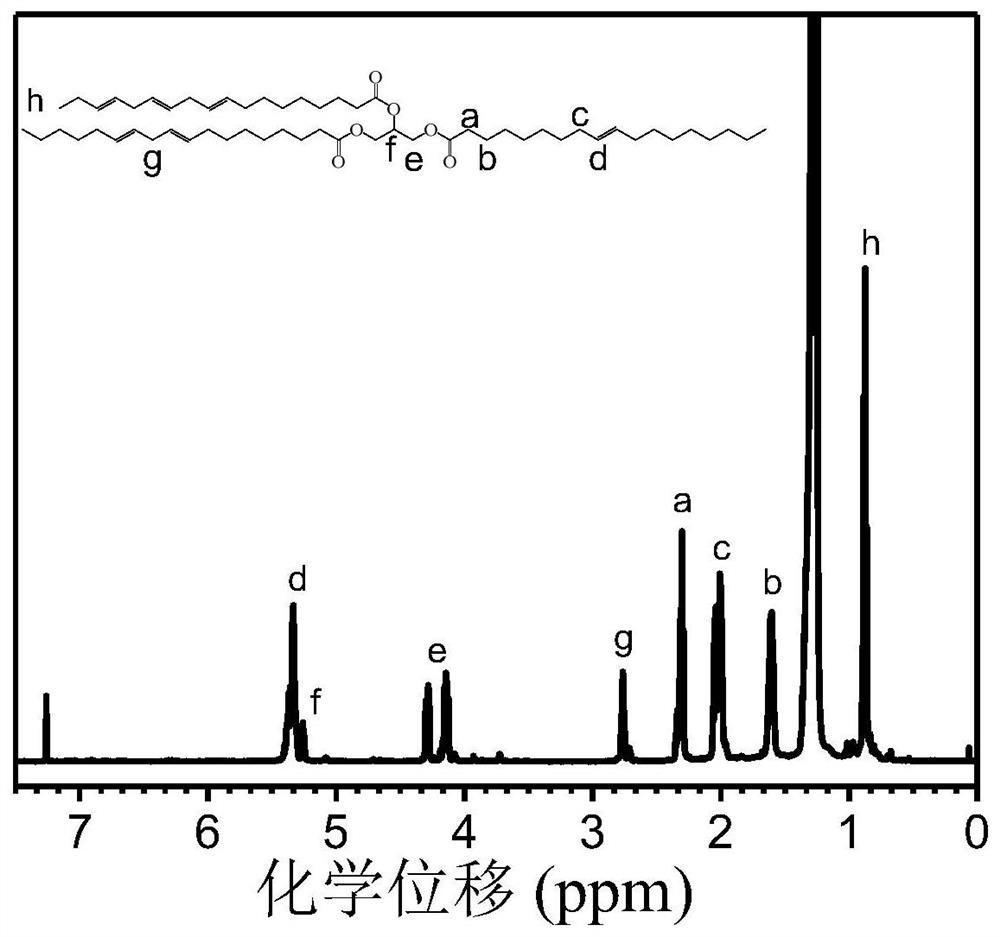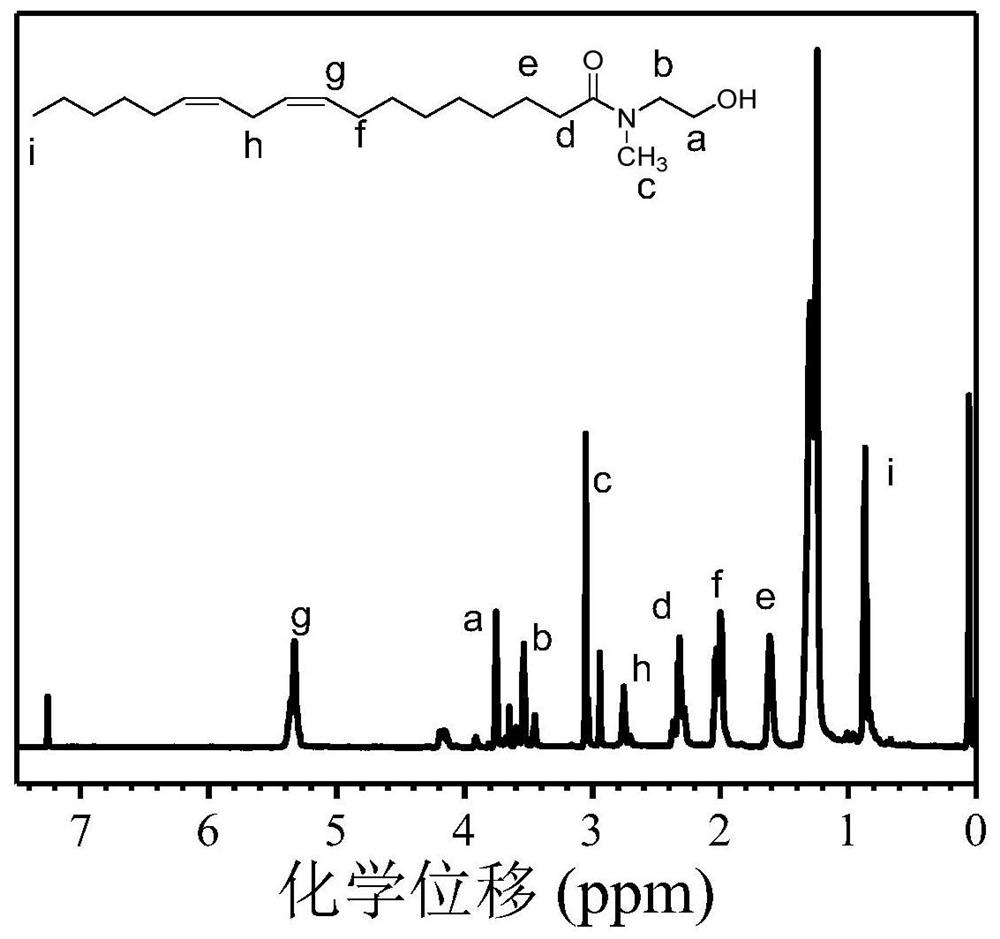Vegetable fat-based latex, preparation method and application thereof
A vegetable oil-based latex technology, which is applied in the field of preparation and vegetable oil-based latex, can solve the problems of the use, preparation and performance research of pure vegetable oil latex.
- Summary
- Abstract
- Description
- Claims
- Application Information
AI Technical Summary
Problems solved by technology
Method used
Image
Examples
Embodiment 1
[0037] Preparation of tallow tree oil epoxy latex: 100 parts by weight of tallow tree oil epoxy monomer, 200 parts of deionized water, 5 parts of emulsifier, 5 parts of emulsifier, and 0.5 part of PH regulator are stirred and ultrasonically alternated for about 1 hour Mix evenly to form a pre-emulsion, take about 20% by weight of the pre-emulsion in a three-necked flask as a primer, heat to 60°C, add 0.3 parts by weight of an initiator to react for 30 minutes, and start to drop the remaining pre-emulsion at a rate of about 3 seconds / drop. After the remaining pre-emulsion is added dropwise, add 0.3 part of initiator and continue the reaction for 4 hours, then raise the temperature to 80°C and keep it warm for 30 minutes, and finally cool down to room temperature and pass through a nylon filter to obtain tallow catalpa oil epoxy emulsion.
[0038] Such as figure 1 Shown, wherein vegetable oil base fatty acid epoxy monomer: the preparation process of tallow tree oil epoxy monom...
Embodiment 2
[0052] Preparation of palm oil epoxy latex: 200 parts by weight of palm oil epoxy monomer, 400 parts of deionized water, 10 parts of emulsifier, 10 parts of co-emulsion agent, and 1 part of pH regulator are uniformly mixed by stirring and ultrasonic to form a pre-emulsion . Get about 20% by weight of the pre-emulsion in a three-necked flask, heat it to 60 ° C, add 0.6 parts by weight of the initiator to react for 30 minutes, and start to drop the remaining pre-emulsion at a rate of about 5 seconds / drop. After the remaining pre-emulsion was added dropwise, 0.6 parts by weight of initiator was added to continue the reaction for 5 hours, the temperature was raised to 80° C. for 30 minutes, and the temperature was finally cooled to room temperature and passed through a nylon filter to obtain palm oil epoxy latex.
[0053] Wherein vegetable oil-based fatty acid epoxy monomer: the preparation process of palm oil epoxy monomer is the same as embodiment one.
[0054] The preparation ...
Embodiment 3
[0056] The preparation of high oleic rapeseed oil epoxy latex: 150 parts by weight of high oleic rapeseed oil epoxy monomer, 300 parts of deionized water, 7.5 parts of emulsifier, 7.5 parts of co-emulsion agent, 0.75 part of pH regulator through Stirring and ultrasonic mixing uniformly form a pre-emulsion. Take about 20% by weight of the pre-emulsion in a three-necked flask, heat it to 60° C., add 0.45 parts by weight of an initiator to react for 30 minutes, and start to drop the remaining pre-emulsion at a rate of about 4 seconds / drop. After the remaining pre-emulsion is added dropwise, add 0.45 parts of initiator to continue the reaction for 3 hours, heat up to 80°C and keep warm for 30 minutes, and finally cool down to room temperature and pass through a nylon filter to obtain high oleic rapeseed oil epoxy emulsion.
[0057] Wherein the vegetable oil-based fatty acid epoxy monomer: the preparation process of the high oleic rapeseed oil epoxy monomer is the same as in Exampl...
PUM
| Property | Measurement | Unit |
|---|---|---|
| Particle size | aaaaa | aaaaa |
| Average relative molecular weight | aaaaa | aaaaa |
| Relative molecular mass | aaaaa | aaaaa |
Abstract
Description
Claims
Application Information
 Login to View More
Login to View More - R&D
- Intellectual Property
- Life Sciences
- Materials
- Tech Scout
- Unparalleled Data Quality
- Higher Quality Content
- 60% Fewer Hallucinations
Browse by: Latest US Patents, China's latest patents, Technical Efficacy Thesaurus, Application Domain, Technology Topic, Popular Technical Reports.
© 2025 PatSnap. All rights reserved.Legal|Privacy policy|Modern Slavery Act Transparency Statement|Sitemap|About US| Contact US: help@patsnap.com



